
Sometimes, an innovator will get a product right the first time—and I’d cite the .30-06 Springfield cartridge, the Fender Telecaster guitar and Mauser’s Model 98 bolt-action rifle. Other times, the tools and gear we use have evolved to the point that you might often look back and wonder how we used such archaic gear with any success at all.
Riflescopes are a great example of this: I looked through one of my father’s ¾-inch tube rimfire scopes the other day and felt like my vision was plagued by cataracts. I can only imagine the difficulty picking out a squirrel’s head in the top of an oak tree, especially in comparison to the 1-4x20mm that rides atop my Ruger 77/22 today.
I feel that reloading gear sits in between those two extremes. In some aspects, the gear of the 1970s and 1980s is completely unchanged and still in good working order. I have a RCBS single-stage press that might be as old as I am, and it still makes great ammo—though in all fairness it’s a simple machine.
But, when it comes to the fine-tuning, I think our reloading gear has evolved into a different set of tools altogether. I have die sets from 1960s that still work fine, but when I compare them to the modern dies, replete with micrometer adjustment dials and bushings to help preserve brass, it’s no wonder why today’s ammunition is so much more consistent.
Esta historia es de la edición March 2022 de Gun Digest The Magazine.
Comience su prueba gratuita de Magzter GOLD de 7 días para acceder a miles de historias premium seleccionadas y a más de 9,000 revistas y periódicos.
Ya eres suscriptor ? Conectar
Esta historia es de la edición March 2022 de Gun Digest The Magazine.
Comience su prueba gratuita de Magzter GOLD de 7 días para acceder a miles de historias premium seleccionadas y a más de 9,000 revistas y periódicos.
Ya eres suscriptor? Conectar
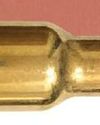
.224 WEATHERBY MAGNUM
The smallest belted case commercially manufactured.
HOW TO START A TRAINING REGIMEN
HOW TO START A TRAINING REGIMEN
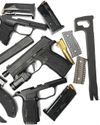
SIG P365 AFTERMARKET PARTS BUYER'S GUIDE
Top upgrades for one of America’s most popular CCW handguns.
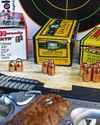
UNDERSTANDING DEFENSIVE HANDGUN BULLETS
Varying designs work in very different ways.
OWN THE NIGHT
Or at least a small part of it

NOSLER'S ASP AMMO
A strong defensive ammo contender.

.30-40 KRAG (.30 ARMY)
Its first U.S. small-bore military cartridge.

RISK MANAGEMENT
The majority of my inner circle, both personally and professionally, is comprised largely of gun guys: law enforcement, former operators, veterans, firearms instructors and the like.
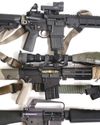
GOLFING & GUNS
Specific golf clubs are designed for specific distances. So are rifles.
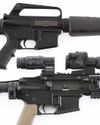
AMERICA'S SWEETHEART
The radical 60-year evolution of the AR-15.